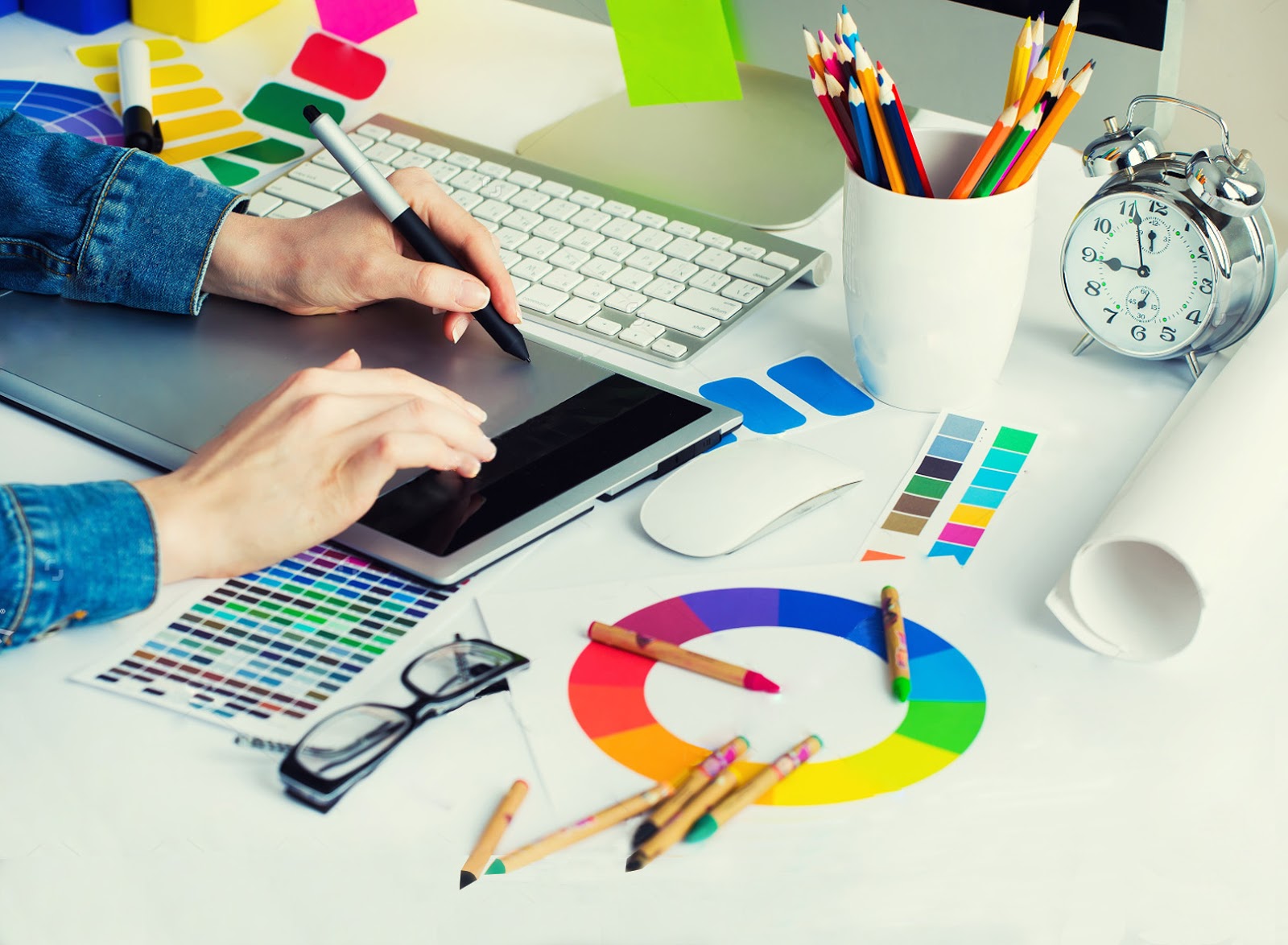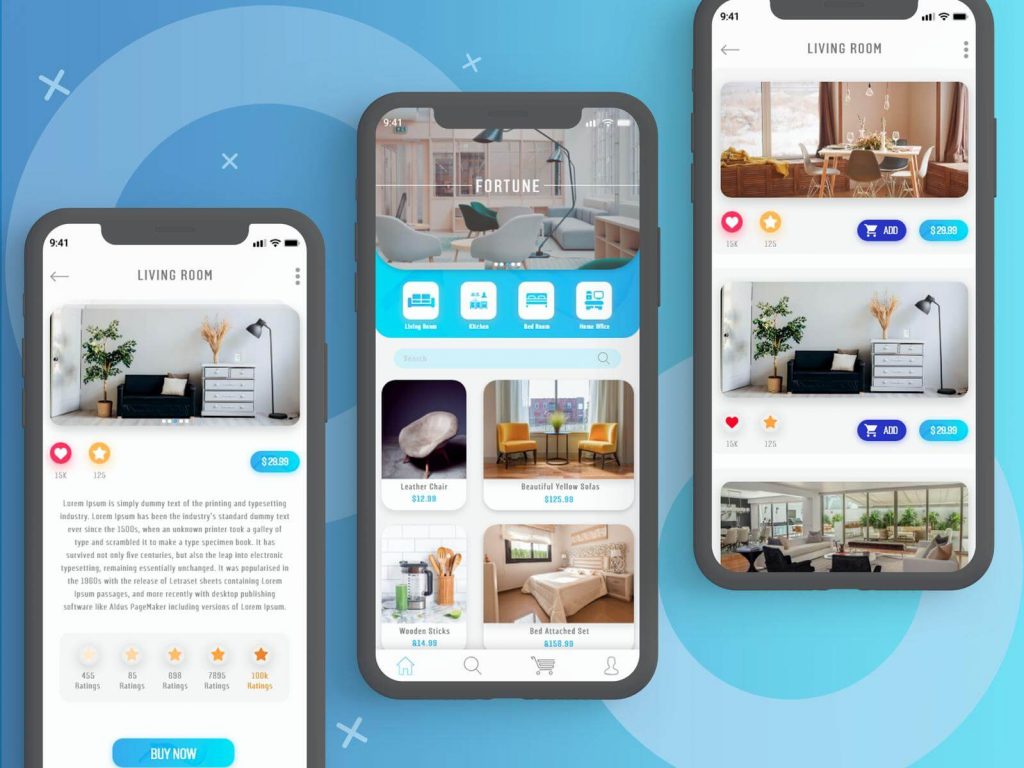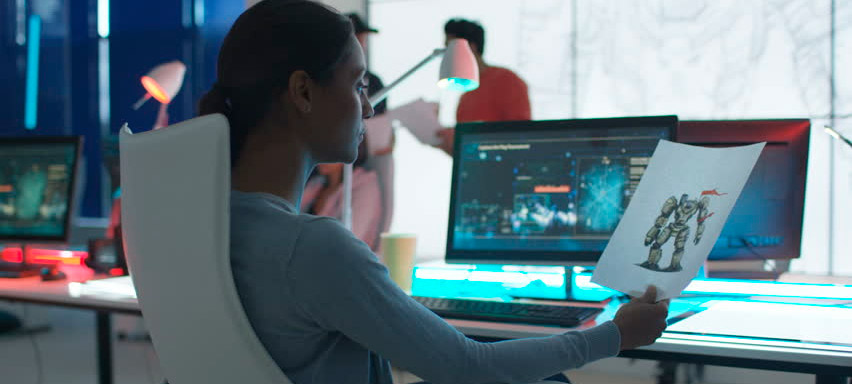The design profession is broader than it may seem at first glance. A designer is someone who combines technical and creative skills. They create and immerse us in a fantastic world of vibrant colors, images, and technology.
Technology is evolving rapidly, and the world of design is no exception. Every month, new programs and technological opportunities emerge, requiring designers to expand their skill sets.
It’s nearly impossible — and unnecessary — to be a jack-of-all-trades in design. Even if you find courses that promise to teach you everything at once, you will eventually choose just one or two specializations for your professional path.
There are at least ten design directions. Let’s look at the most popular ones.
Web Designer
The top position goes to the person who creates the appearance of websites. It’s the web designer who decides where different elements will be placed on the page, how they will look, and how users will interact with them.
Previously, a web designer’s main task was to make a site look beautiful. Now, usability is just as important. This means a web designer must understand the basics of usability and layout. You will gain all these skills in the WAYUP course “Web Designer: Your Ticket to Thailand”.
Hundreds, even thousands of job listings on employment platforms confirm the high demand for this profession.

UX and UI Designer
The work of a UX/UI designer overlaps with that of a web designer, but it's increasingly recognized as a separate role.
A UX designer creates interfaces that are user-friendly and thoroughly thought out. They analyze user experience and test every element. The user's perception and comfort with the product largely depend on their work.
A UI designer focuses on how the product looks. They visually implement the journey envisioned by the UX designer while ensuring a consistent style across all elements.
The boundaries between UX and UI designers are often blurred, and in many cases, one person handles both roles.
Graphic Designer
The field of graphic design is quite broad, but its core task is developing a unique visual identity for a company or product by creating logos, custom fonts, color schemes, and more. They build a connection between the brand and the consumer.
Everything a graphic designer does should ultimately attract and sell. That’s why, in addition to creativity, they must understand psychology to identify the interests and needs of the target audience.
Designing layouts for printed materials is also part of a graphic designer’s job.
You can learn the basic skills in just a few months in the WAYUP course “Graphic Designer: Brand Vector”.

Mobile App Designer
We’ve often mentioned in our articles the rapid growth of mobile internet traffic. This trend has greatly impacted the design industry.
Every company now needs at least a mobile version of their website — and ideally, their own mobile app. This has led to the emergence of mobile app design as a separate direction.
A mobile app designer focuses on creating mobile interfaces using specific tools to meet smartphone users’ expectations.
They must be well-versed in Android and iOS platforms.

3D Designer
This specialist works with three-dimensional modeling. There are many directions in 3D design, including architecture, construction, engineering, advertising, gaming, and more.
3D designers create objects in virtual space in a way that viewers perceive the entire picture as real.
The main skill a 3D designer must have is strong spatial and artistic thinking.
Game Designer
This is a branch of 3D design. But a game designer does more than just create 3D models — they become full-fledged creators of the game, setting rules and bringing all parts together into a cohesive product.
Beyond developing the concept and project details, a game designer must also communicate their vision to the developers who will implement it.
They also need to consider trends and player psychology. Having an idea isn’t enough — it must be something people want to play.
This may be one of the most creative design fields. And while that may be true, game design is not just about creativity — it also involves coordinating all team members (like developers), testing, writing formulas, and handling documentation.

AR/VR Designer
This designer needs not only artistic skills but also programming knowledge and a good grasp of history — since they often reconstruct historical events and places in virtual environments.
A VR designer’s job is not only to create a detailed virtual world but also to manage it. The experience must be immersive and comfortable for the user.
This is one of the newest and fastest-growing design directions, offering great opportunities.
Just imagine — soon, we might be able to travel the world without leaving our couch.
Motion Designer / Animator
Animation is a core part of 3D design. In addition to creating 3D objects, the animator brings them to life through movement.
Motion designers play a key role in animated films. Without them, characters wouldn’t move or interact on screen.
They can also animate user interfaces and elements, adding uniqueness to a website’s design.
Product Designer
A product designer blends creativity with analytics, thinking outside the box while maintaining engineering precision. Their job is to help the business meet key goals.
Product designers create the interaction flow between a brand and its users — via websites or mobile apps. Their main goal is to make every detail intuitive for the user while also benefiting the company.

As you've likely noticed, many modern design fields overlap, complement each other, or have evolved from one another. Yet each one has its own specific features and nuances.
All the fields mentioned continue to grow rapidly, which means professionals in these areas will remain in demand for years to come. Try to choose one direction — and become a true expert in it.
